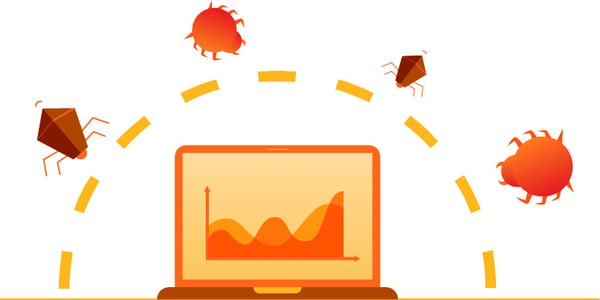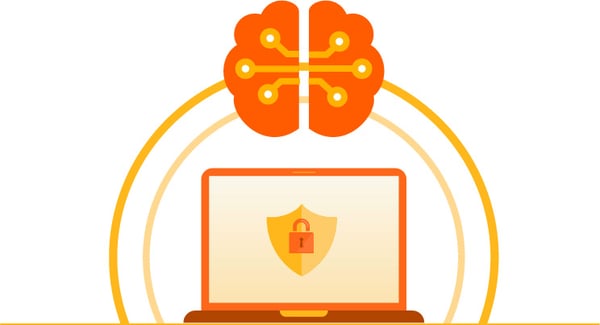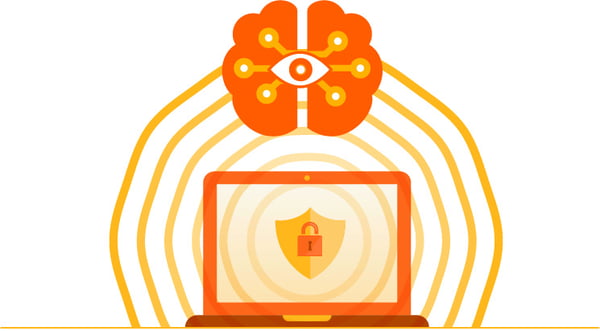Cybersecurity is serious business. In fact, you would be foolish not to take security seriously in the current threat landscape. As the current threat level constantly rises, companies across industries must improve their cyber defenses and fortify their infrastructure.
According to research, the global information security market is expected to reach $170.4 billion this year. Partly driven by organizations evolving and fortifying their defenses against new threats, cybersecurity is now a business imperative.
It makes perfect sense as many as 68% of business leaders said their cybersecurity risks increased over the past year. The good news is that cybersecurity protocols have evolved considerably in recent years.
One of the latest developments in the infosec world is the inclusion of artificial intelligence (AI). Through behavioral analysis and automated remediation, AI has transformed what antivirus protection means for modern businesses.
As it’s a never-ending game of cat and mouse, it’s no longer a case of buying and implementing antivirus software and forgetting about it. Instead, we must all take an active approach using different tools and services available to us to mitigate risk and protect our digital assets.
By harnessing the power of AI and its subset machine learning (ML), next-gen antivirus solutions like EDR have optimized the process of threat detection, response, and remediation. But before we get into the differences and similarities between these security tools, let’s first define them.
What is a Traditional Antivirus Solution?
Traditional antivirus solutions are often what comes installed when you buy a laptop with Microsoft Windows installed. These often-free antivirus programs quickly detect and remediate known malware infections and new threats.
The security firms developed legacy antivirus software to secure personal devices and stop attackers from compromising servers and endpoints. For example, old-school antivirus protection tools work in the background of your machine. Furthermore, the antivirus software will scan a file for known malware whenever you download or open a file.
The most common forms of malware detected by traditional antivirus tools include:
- AdWare
- Bots and botnets
- Keyloggers
- Ransomware
- Trojans
- Worms
- Viruses
We can also use these security solutions to run full system scans for potential threats. Whenever it scans a file or a device, it’ll compare the files on the system to an extensive list of virus definitions.
Whenever anything matches, it’ll deal with it accordingly. As such, you must continuously update the database to be alert to the latest malware and ransomware attacks.
Traditional Antivirus Solutions: Pros and Cons

Pros:
- Virus protection
- Web protection
- Spyware protection
- Firewall
- spam protection
- highly cost-effective
Cons:
- Not total protection
- Limited threat detection techniques
- System slowdown
- System slows down
As you can see from the above, a traditional antivirus solution that’s automatically updated can protect you from known threats. But what about unknown threats hidden within the code? That’s where EDR comes in.
What is EDR?
EDR or endpoint detection and response is an integrated endpoint security protocol that combines endpoint data collection and continuous real-time monitoring with rules-based automated response and behavioral analysis capabilities.
Gartner’s very own Anton Chuvakin was the first to coin the term that describes this security system that proactively detects and investigates suspicious activity on hosts and endpoints. As there is a significant level of automation involved, IT teams can easily optimize their cybersecurity protocols and (maybe even) enjoy their days off.
The primary objective of EDR security systems are as follows:
- Automatically identify and respond to known threats, remove or contain them, and alert the security team
- Continuously analyze data to identify threat patterns or suspicious behavior quickly
- Monitor and collect activity data from various endpoints (and look out for potential threats)
Unlike traditional antivirus programs, EDR solutions take a proactive approach to cybersecurity. As such, your security team can respond to the rapidly evolving threat level on-demand.
EDR Solutions: Pros and Cons

Pros:
- AI & ML
- Quickly pull files from the host
- Isolate a host
- Threat intelligence integration
- View endpoint activity in a process tree
- A proactive approach to cybersecurity
- Real-time monitoring
Cons:
- Costs
- It needs more defensive capabilities
- Human resource requirements
Is an EDR solution enough to keep your brand name out of the headlines? It depends.
What is Next-Gen Antivirus?
Next-gen antivirus or next-generation antivirus solutions are essentially like your traditional antivirus software but on steroids. This is because next-gen antivirus programs offer an advanced level of cybersecurity and endpoint protection.
Next-generation antivirus software also goes far beyond the usual heuristics and malware signatures and takes a cloud-based approach. This means that it’ll proactively detect and prevent fileless attacks, including non-malware and malware attacks.
By combining AI and threat intelligence, next-gen security tools provide these additional benefits:
- Comprehensive endpoint data collection and analysis to determine root causes
- Recognize suspicious activities and malicious techniques and procedures (TTPs) from unknown sources
- Identify and respond to new and emerging threats that previously went undetected
It’s important because hackers and cybercriminals today know exactly where they can find potential gaps and vulnerabilities in an organization’s network and infrastructure. They use this knowledge to try and penetrate the system. If your company still leverages traditional antivirus solutions, they can easily bypass it and go undetected.
Next-gen Antivirus Solutions: Pros and Cons

Pros:
- AI & ML
- Comprehensive cybersecurity
- Exploit Blocking
- Threat intelligence Integration
- Real-time monitoring
- Automation
- Behavioral analysis
- Forensics
Cons:
- Costs
What’s the Best Security Solution for Your Business?
Right off the bat, it’s safe to say that traditional antivirus software simply doesn’t work. The current threat landscape demands a proactive approach to security, and legacy antivirus solutions just don’t fit the bill.
So, if you’re protecting your business with traditional security tools, it’s time to update it (and immediately). But what should you get? EDR? Well, yes, but not just an EDR solution.
EDR is essentially a tool that’s part of your security stack. They generally don’t replace antivirus or firewalls. Instead, they complement and enhance other security protocols and optimize threat hunting operations. As such, it’s quickly becoming the go-to security solution that enterprises depend on to secure their networks better.
Even if your business still leverages a robust next-gen antivirus solution, you can still depend on several EDR features like various analytical tools that run in the background, real-time monitoring of entry points, and threat reporting.
However, it’s important to note that not all EDR tools are created the same. Some offer a wide range of security features, while others don’t. It really depends on the type of EDR solution you choose for your specific use case.
Ideally, it’s best to add EDR to your cybersecurity stack with a next-generation antivirus solution. In this scenario, your business will benefit from endpoint protection and much more. If you’re already running your operation on the cloud, you can also take advantage of significant computational power, scalability, and proactive cybersecurity.
For example, suppose your next-gen antivirus and EDR solutions are running on the cloud. In that case, you can also benefit from streamlining analytics, real-time endpoint threat detection, and monitoring. You can also use this tool to compare the monitoring data with unfiltered historical endpoint data. This approach also helps optimize global threat detection systems and allows them to make reasonably accurate predictions.
Furthermore, next-gen platforms also include security protocols like managed detection and response (MDR) and extended detection and response (XDR). After all, we must do whatever it takes to avert zero-day attacks, fileless attacks, and more.
Ideally, your next-gen cybersecurity stack should include the following security tools:
- Authentication protocols
- Firewalls
- Perimeter security
- Endpoint protection platforms (EPP)
- EDR
- MDR
- Real-time monitoring
- Sandboxing
- XDR
Besides these cybersecurity tools, you should also strive to build a security culture within the organization. This approach will help ensure that your staff is always alert to social engineering campaigns. You can also make adherence to cybersecurity best practices a way of life.
Categories: Security, Managed IT Services, IT Management, Network Security, Managed Security Services, IT Security










